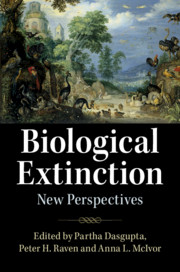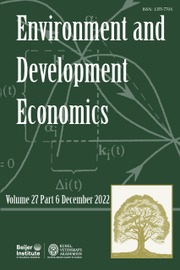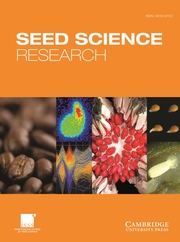Biodiversity Economics
Human induced biodiversity loss is greater now than at any time in human history, with extinctions occurring at rates hundreds of times higher than background extinction levels. The field of biodiversity economics analyses the socio-economic causes of and solutions to biodiversity loss by combining the disciplines of economics, ecology and biology. This field has shown a remarkable degree of transformation over the past four decades and now incorporates the analysis of the entire diversity of biological resources within the living world. Biodiversity Economics presents a series of papers that show how bio-economic analysis can be applied to the examination and evaluation of the problem of various forms of biodiversity loss. Containing insightful bio-economic research by some of prominent practitioners in the field, this volume will be an essential research tool to those working on biodiversity issues in the academic, policy and private sectors.
- Provides comprehensive coverage of all areas of biodiversity economics
- Comprises a superb collection of contributors including David W. Pearce, Edward B. Barbier, Charles Perrings, Jason F. Shogren, Nick Hanley
- Can be used as a reference manual or handbook
Reviews & endorsements
Review of the hardback: 'For the curious, it is an exceptional introduction, covering both the intensive and extensive margin of biodiversity economics. For the cognoscenti, it is a store of original value contributed by outstanding scholars in the field.' Gardner Brown, Professor Emeritus, University of Washington
Review of the hardback: 'For many years the BioEcon program has provided a forum for cutting-edge economic analysis of the important and difficult challenge of biodiversity conservation. This book brings together many of the most important contributions to have emerged from that program, providing an excellent overview of the state-of-the-art in the field.' Stefano Pagiola, Senior Environmental Economist, The World Bank
Review of the hardback: 'Biodiversity loss is one of the great challenges of our time, alongside and closely linked to both climate change and global poverty. This volume offers penetrating analysis and practical approaches to assess the values, stem the loss and begin construction of a biodiversity-friendly economy.' Joshua Bishop, IUCN - The World Conservation Union
Product details
May 2009Adobe eBook Reader
9780511530258
0 pages
0kg
This ISBN is for an eBook version which is distributed on our behalf by a third party.
Table of Contents
- List of figures
- List of contributors
- Preface
- Acknowledgements
- Foreword Jeffrey A. McNeely
- Introduction Andreas Kontoleon, Unai Pascual and Timothy Swanson
- 1. Do we really care about biodiversity? David W. Pearce
- Part I. Causes of Biodiversity Loss: A. Land Conversion:
- 2. The economics of land conversion, open access and biodiversity loss Edward B. Barbier
- 3. Estimating spatial interactions in deforestation decisions Juan Robalino, Alexander Pfaff and Arturo Sanchez-Azofeifa
- 4. Resource exploitation, biodiversity and ecological events Yacov Tsur and Amos Zemel
- B. Invasives:
- 5. Pests pathogens and poverty: biological invasions and agricultural dependence Charles Perrings
- 6. Prevention versus control in Invasive Species Management David Finnoff, Jason F. Shogren, Brian Leung and David Lodge
- C. International Trade:
- 7. Trade and renewable resources in a second-best world: an overview Erwin Bulte and Ed Barbier
- 8. International trade and its impact on biological diversity Rafat Alam and Nguyen V Quyen
- Part II. The Value of Biodiversity: A. Concepts:
- 9. Designing the legacy library of genetic resources: approaches, methods, and results Tim Swanson and Timo Goeschl
- 10. Why the measurement of species diversity requires prior value judgments Stefan Baumgärtner
- B. Techniques:
- 11. Combining TCM and CVM of endangered species conservation program: estimation of the marginal value of vultures (Gyps fulvus) in the presence of species-visitors interaction Nir Becker, Yael Choresh, Moshe Inbar and Ofer Bahat
- 12. Valuing ecological and anthropocentric concepts of biodiversity: a choice experiments application Michael Christie and Nick Hanley, John Warren, Tony Hyde, Kevin Murphy and Robert Wright
- 13. Spatially explicit choice experiments: a case of multiple-use management of forest recreation sites Paula Horne, Peter Boxall and Wiktor Adamowicz
- Part III. Policies for Biodiversity Conservation: A. Contracts:
- 14. Auctioning biodiversity conservation contracts Gary Stoneham, Vivek Chaudhri, Loris Strappazzon and Arthur Ha
- 15. An evolutionary institutional approach to the economics of bioprospection Tom Dedeurwaerdere, Vijesh Krishna and Unai Pascual
- 16. An ecological economic programming approach to modelling landscape level biodiversity conservation Ernst-August Nuppenau and Marc Helmer
- B. Implementation:
- 17. The effectiveness of centralized and decentralized institutions in managing biodiversity: lessons from economic experiments Jana Vyrastekova and Daan van Soest
- 18. Conserving species in a working landscape: land use with biological and economic objectives Steve Polasky, Erik Nelson, Eric Lonsdorf, Paul Fackler and Anthony Starfield
- 19. Balancing recreation and wildlife conservation of charismatic species Doris Behrens and Birgit Friedl
- 20. Modelling the re-colonisation of native species Anders Skonhoft
- Part IV. Managing Agro-Biodiversity: Causes, Values and Policies:
- 21. On the role of crop biodiversity in the management of environmental risk Salvatore Di Falco and Jean-Paul Chavas
- 22. Assessing the private value of agro-biodiversity in Hungarian home gardens using the data enrichment method Ekin Birol, Andreas Kontoleon and Melinda Smale
- 23. Agricultural development and the diversity of crop and livestock genetic resources: a review of the economics literature Melinda Smale and Adam Drucker
- Index.








